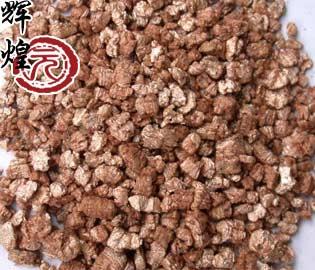

- Manager£ºJiujun Li
- Mobile£º+86-13903119840
- Phone£º+86-0311-88708888
- Fax£º+86-0311-88709840
- E-mail£º86234885@163.com
- Skype£ºsjz139
- MSN£ºsjz139@hotmail.com
- Postal Code£º050041
- Address£ºYuhua District In
- Shijiazhuang No.68 Road
- side (b plant North)

vermiculite series

Properties Vermiculite crystallizes in the monoclinic system, and the crystal faces are often marked wth triangular lines at 60 degrees and 120 degrees. X-ray studies have indicated that vermiculite constitutes a specific type with a definite structure differing from that of mica or chlorite. From the tabulation of a number of analyses, Gruner has stated that its average composition can be represented by the formula 22MgO. 5Al2O3, 22SiO2. 40H2O whereas J. B. Myers gives the structural formula as (OH)2. (Mg,Fe)3 (Si, Al, Fe)4.O10.4H2O. The indefinite and variable chemical composition of vermiculite is indicated by the following ranges of major constituents in percentages: Silica, 31-41 Alumina, 10-17 Iron oxides, 5-22 Magnesium oxide, 11-13 Total water content (free water and water of crystallization) Nineteen varieties of vermiculite have been identified and listed. Colloquilly (mostly in England) vermiculite is known as Sunshine, Feather Gold and Golden mica. In Japan, it is known as Leach stone. Its hardness reanges from 1.5 to 3. The specific gravity of the crude material as mined is about 2.5, fusion point is approximately 1335ºC and specific heat is 0.2. The property of exfoliation together with the development of golden, bronzy or silvery lustre on heating is the outstanding characteristic ofvermiculite. This is one of the most important characteristics by which vermiculite differs from mica. Exfoliation commences from varying temperatures with different samples, in some cases as low as 150ºC. In industrial practice a temperature range between 800ºC-1100ºC (for a period of 4 seconds to 2 minutes) is employed. The exfoliation takes place solely in a direction perpendicular to the cleavage. Exfoliation is said to result from the expulsion of combined water by the purely mechanical effect of the sudden formations of steam. Certain qualities of vermiculite exfoliate and develop lustre when immersed in cold hydrogen peroxide (H2O2) or other oxidising agents such as a mixture of potassium permanganate (K2MnO4) and hydrochloric acid (HCl). In these cases the exfoliation is probably caused by the mechanical force involved in the liberation of oxygen from the reagent by the catalyst present in the vermiculite. It has been suggested that exchangeable magnesium ions present in the water layers are responsible for the liberation of oxygen. The moisture content of the mineral has a bearing on its price, and the combined water content gives an indication of exfoliation properties.


